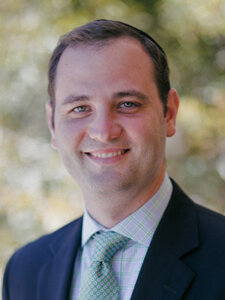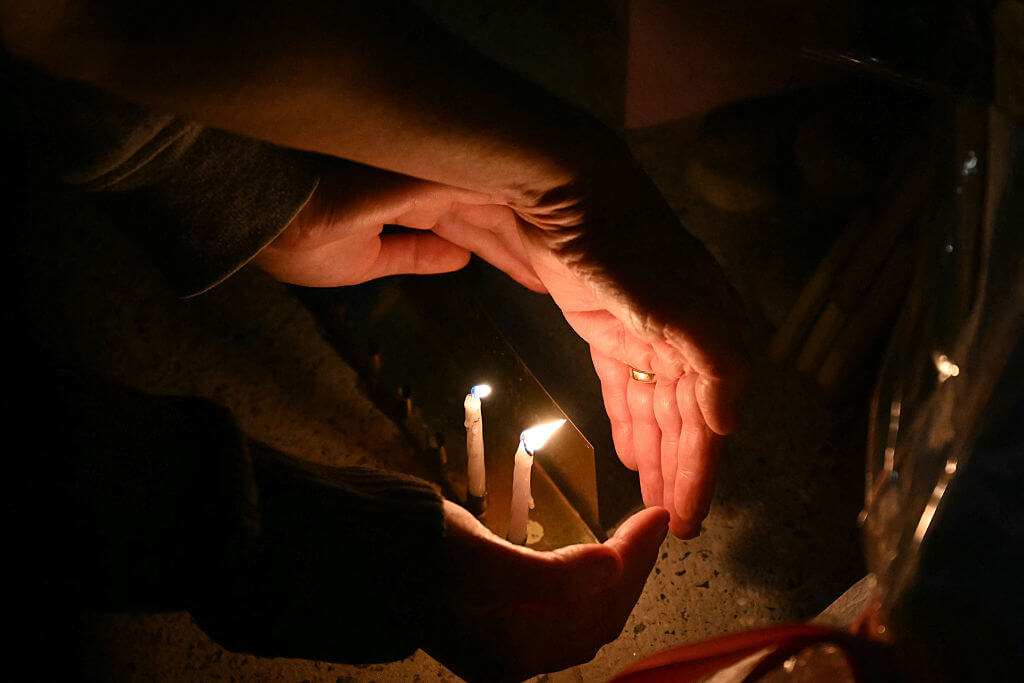The Eruv Dividing Church and State in the Hamptons

Graphic by Angelie Zaslavsky
America’s most famous eruv is back in the news — and this time, not simply as the butt of a joke on Jon Stewart’s “The Daily Show.” In early January, a federal appeals court issued a key ruling concluding that erecting an eruv in Westhampton Beach, New York, would not violate the First Amendment. This ruling comes on the heels of nearly four years of litigation by a group of Westhampton Beach residents, Jewish People Opposed to the Eruv, who have argued that the eruv violated their constitutional rights.
According to JPOE’s complaint filed in court, government authorization of the eruv in the Hamptons — through permission to use government-owned utility poles — would convey that “the governmental authorities… have selected one particular form of Judaism for special and preferential treatment” and that non-Orthodox Jews “are not ‘real,’ ‘true’ or ‘observant’ Jews.” As a result, JPOE has argued that the eruv is a religious symbol and that affixing the plastic strips and strings necessary for the creation of the eruv to government-owned poles would entail an affront to the core constitutional principle embedded in the First Amendment: the separation of church and state.
As a pure matter of law, the court’s rejection of this claim is far from surprising. No court has ever held that erecting an eruv on government property violates the First Amendment. For example, in 2002 another federal court of appeals upheld the constitutionality of a heavily contested eruv in Tenafly, New Jersey, concluding that “no reasonable, informed observer would believe the borough is affirmatively sponsoring an Orthodox Jewish practice.” Similarly, in January’s ruling, the court concluded, “No reasonable observer who notices the strips… would draw the conclusion that [the government] is thereby endorsing religion.” Indeed, this is all far from surprising, given that the strips and strings in question are all but invisible, making it hard to sympathize with JPOE’s vociferous attack against the eruv.
But while the legal outcome may not be surprising, the decision has deeply significant implications, providing a blueprint for how church and state are meant to coexist in a pluralistic society. The reason that, as a general matter, the First Amendment prohibits government sponsorship of a particular religion is because it sends a message to those of other faiths — and those of no faith at all — that, in the words of now-retired justice Sandra Day O’Connor, “they are outsiders, not full members of the political community.” So when government officials put up a Christmas tree in front of a courthouse, it sends a message to minority religions that their failure to embrace majoritarian faith traditions leaves them on the outside looking in.
However, not every public expression of religion triggers these concerns. It is one thing for government to identify and select one religion for preferential treatment. It is quite another for government to open its public spaces for any and all expressions of faith and identity. Religious beliefs and personal identities should not be relegated to private life and then stripped away when entering the public sphere. And to require that all publicly owned spaces remain devoid of any semblance of religion is to demand a degree of conformity that directly undermines the burgeoning religious diversity here in America. In this way, upholding the eruv further bolsters religious pluralism, enhancing the extraordinary degree of religious freedom encapsulated in the First Amendment.
It is worth noting that in their more candid moments, those attacking the eruv have explicitly rejected these ideals of pluralism. One of the plaintiffs, Esther Lubliner, in expressing her opposition to the eruv, has said, “If you’re Orthodox, know that not every place in the world is for you.” And another plaintiff, Arnold Sheiffer, has described his opposition to the eruv in the following terms: “We want to continue as a secular village and our way of life.” These unabashed attacks on religious pluralism aspire to strip public life of all forms of religious difference and to sanitize public spaces with the imposition of secularized conformity. Thus, while the plaintiffs have invoked the First Amendment to support their claims, the reality is that the First Amendment stands for precisely the opposite — an unadulterated embrace of the multitude of ways we express our differences.
On that count, those attacking the eruv did get one thing right: The eruv is more than just a legal fiction that allows for the carrying of books and pushing of strollers on the Sabbath. It is a symbol. But, contrary to their contentions, it is not a symbol of impermissible government entanglement with religion; instead, the eruv stands as a symbol of pluralism, rejecting the impulse to lock our beliefs and identities in the closet — and encouraging us to invite our society’s diversity into the public square for all to celebrate.
Michael A. Helfand is an associate professor at Pepperdine University School of Law and associate director of Pepperdine University’s Diane and Guilford Glazer Institute for Jewish Studies.
















